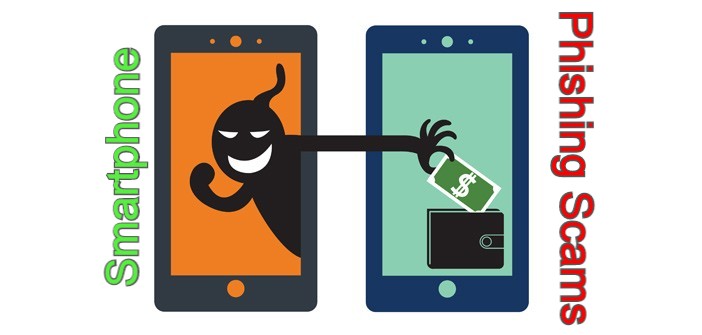Types Of Smartphone Phishing Scams And How To Avoid

The smartphone is a wonderful thing as it enables us to perform a lot of day to day tasks proficiently especially when it is connected to the internet. It also provides instant and 24/7 access to an ocean of information and data we need often. But unfortunately, benefits and access to data are reciprocal, and stopping your personal data from getting out there in hands of malicious persons is hard. Cybercriminals are smarter than ever and are quick to adapt novelties in this digital world to gain access to personal and sensitive data of smartphone users.
Regardless of the strong security features offered by both Android and iOS, it is difficult for a smartphone to protect its users from phishing attempts and other cybersecurity attacks. Here in this article, you can read about common types of smartphone phishing scams and how to avoid them.
Types Of Smartphone Phishing Scams
Smishing (SMS-based phishing)
Smishing happens when cyber criminals or attackers send text messages that contain links or other information to steal the user’s data. The small screen of the mobile phone and shortened links are easy to mistake a wrong and hazardous SMS message as an innocent one. As we usually are unable to hover over a URL like we can do over desktop, we are less likely to verify for typos or other things even if they are sent from financial institutions or other organizations. Most of the scammer pretending to be as your bank asking to update your PIN or as a lucky draw or raffle telling you that you have won something of value.
In order to avoid SMS based phishing and scams, a keen eye for verifying the details is vital. First of all, check the sender’s detail, then go through the message carefully and make a call to the concerned organization or company to verify whether they have sent the message or sent by the malicious persons. Keep in mind that reliable companies and organizations never ask for confidential details of their customers especially over SMS messages. If there is a link or URL inside the message, search over the web to verify details before contacting back.
Vishing (Call Based Phishing)
Voice phishing, also known as Vishing or call-based phishing is the same method used in SMS phishing but in this approach, they make a call and ask users to provide personal details. Vishers are experienced smooth operators who can mimic bank tellers and customer service representatives to hunt personal details of a user. They also use fake caller IDs and IVRs to look professional and authentic.
In order to avoid such dangerous calls, use built-in call blockers offered by both iOS and Android to blacklist those numbers who are making fake calls. Moreover, remember to verify with your bank, carrier service provider or other organization before providing them with your sensitive details.
Malicious Apps
Mobile app are another common source of cybersecurity attacks and phishing activities as a lot of applications are out there that are built by hackers and cybercriminals to hack into users’ personal details and digital files stored on the device. Through such mobile apps, hackers can get privileged access into your device and can steal your most personal data like pictures, videos, business files, documents, and agreements, etc. that can be used for malicious purposes. That is the reason, always install apps that are verified and marked as protected by the app stores. Also, check for their reviews and ratings to make sure they are safe to install. Always avoid third-party apps (APKs) to minimize the app phishing attacks.
Social Media Phishing
Social media platforms are a major part of today’s digital landscape. However, not everyone is really who they claim to be on social media. Even the most reliable and trustworthy social media profiles can be hacked to use them for malicious activities. Hackers also hack social media accounts and lead users to surrender money or personal information.
Always be cautious and be wary of notifications, requests, and messages received over different social media accounts. Hackers also hide dangerous links with the help of link shortening services. Unnecessary personal information shared on social media profiles could be useful for hackers that they can use in malicious activities. So, limit your personal information and data on social media profiles to stay safe on social media and protected from smartphone phishing attacks.
How to Avoid Phishing Scams on Your Smartphone
- Turn Basic Security Guards on
Use the security options provided by your operating system and protect yourself from phishers. For instance, you can use call & SMS block features to avoid unnecessary and fake calls.
- Use Official and Trusted Apps
Make sure an app you are about to install on your smartphone is official and trusted as well. Always search for a desired app in the official app store and avoid third-party apps available on the web.
- Learn the Basic Security Measures
Whether you want to prevent phishing attacks or cybersecurity threats, learn the basic security measures and apply than in real life to make sure your smartphone is secure and protected as well.
- Use safe Browsers
Always try to use safe web browsers while searching over the web. For instance, as an Android user, you should be using chrome for mobile as it is safe browser and eliminates phishing sites and malware.
- Anti-virus Software for Mobile
A lot of anti-viruses for mobiles are out there in the market that can be used to make a smartphone virus-free and to prevent other malicious activities.




